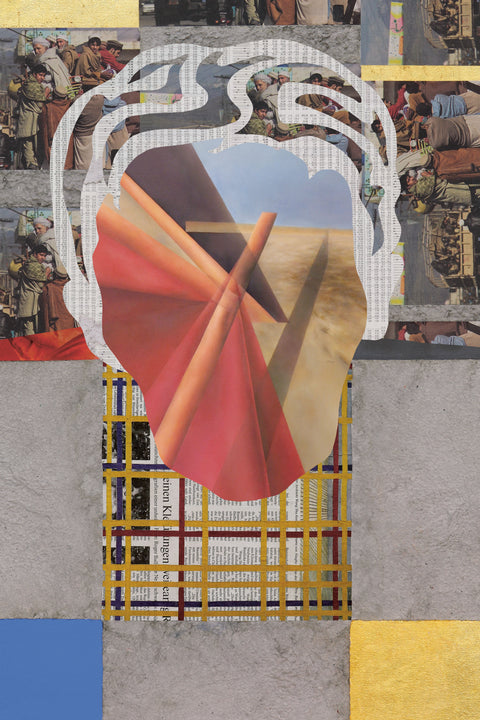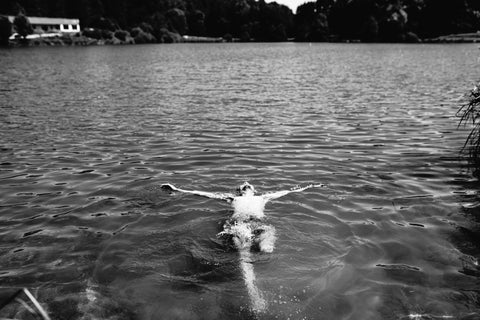
Between 1985 and 1993, Bertien van Manen made eight trips to the Appalachians, on her own, the first of which involved three weeks in a pick-up truck driving on narrow, steep roads without curbs, across Tennessee, West Virginia, Kentucky and Pennsylvania. It was exhilarating, and not without risk. She was befriended by a mining couple, Mavis and her husband Junior, and stayed with them in their trailer overlooking Cumberland in Kentucky. Their generosity was boundless, making her feel at home in their family and helping her wherever they could. That she would stay in touch and visit again was clear from the start. One time she even stayed for six months, thanks to a grant from the Dutch government.
Sharing other people’s homes means negotiating a balance between intimacy and the characteristic eagerness of the photographer. It also means bearing in mind the photographer’s power, taking care to name the people in the photographs and to bring them prints, as well as heeding their wishes regarding public exposure. For instance, she has never published or exhibited a stunning shot she made of a mining woman taking a shower, and recalls a remarkable scene with a mechanical mower, which she could not photograph because the man operating the machine did not wish it. Sometimes a personal inhibition came into play: she found herself unable to photograph the women prostrating themselves before a priest in a Russian orthodox church, owing to a childhood fear of committing sacrilege.

Over the years the professional cameras and lenses she used for her commissioned work were replaced by ever simpler compact cameras. Occasionally, when a more refined technique was called for, she would employ a medium-sized camera. The handy compact camera enabled her to be less intrusive, less of an outsider, thereby easing her integration into the daily life of the family. It became increasingly clear that sophisticated techniques stood in the way of what she was after: spontaneity, intimacy, concentration on the lives of ordinary people.
Her most important work originated in the former Soviet Union, after the Berlin wall came down. She had already been in Budapest, and in the Czech Republic. She photographed women in Poland for an article in Vrij Nederland. In 1990 she set off with two journalists to Romania, by car. The journey took four days, through snow, ice, and barricades of Romanian revolutionaries. Upon arrival in Bucharest her travel companions went straight to their hotel, exhausted, but she took to the street, stopped in a café, spoke with students who had lost friends, and went around with one of them to take pictures. The mood was surreal, menacing, shots were being fired. Later on, she went back several times to photograph the degrading conditions in orphanages and hospitals, but more significantly to photograph the people: minorities, Hungarians, Swabian Germans, Roma.

During the first half of the nineties she made fifteen extensive trips through former Soviet Republics. Her interest in the Russian territory had already been sparked in the early eighties; she had learned the language and had travelled to the Donbas region in Eastern Ukraine in 1987, again out of a desire to learn about the mining communities. During those years she had difficulty establishing the kind of contacts she needed for her photographs, but by the early nineties she found it much easier, thanks in part to Glasnost and Perestroika. Just as she had done in the Appalachians, she lodged at length with people she met. By then she was far from the only photographer seeking to portray the dissolution of the old Soviet Union, but her aim was different: she did not photograph historical events, but sought to penetrate deep into people’s lives, doing her utmost to avoid the cliches of picturesque poverty and deprivation – a constant struggle, noted repeatedly in her diaries. Those diary entries demonstrate how her primary focus was meeting people and getting to know their daily lives, habits, and customs.
Photographically speaking, everything fell into place there. Even more so than in the Appalachians, she succeeded in homing in on her subjects. She knew exactly what she wanted to capture, without compromising the gestural spontaneity. She was on the lookout for beauty with an edge, poses that are never static, situations that exude both warmth and harshness. She was keenly aware of the need to attain close proximity while maintaining the distance necessary for a convincing image.

Excerpt from 'Portrait of a Woman' by Hripsimé Visser, from Archive by Bertien van Manen. Translated by Ina Rilke.

OTA bound paperback with jacket
21.5 x 28cm, 384 pages
€60 £50 $70
The signed edition includes a slip signed by the artist and bound into the inside back cover.
€65 £55 $75





